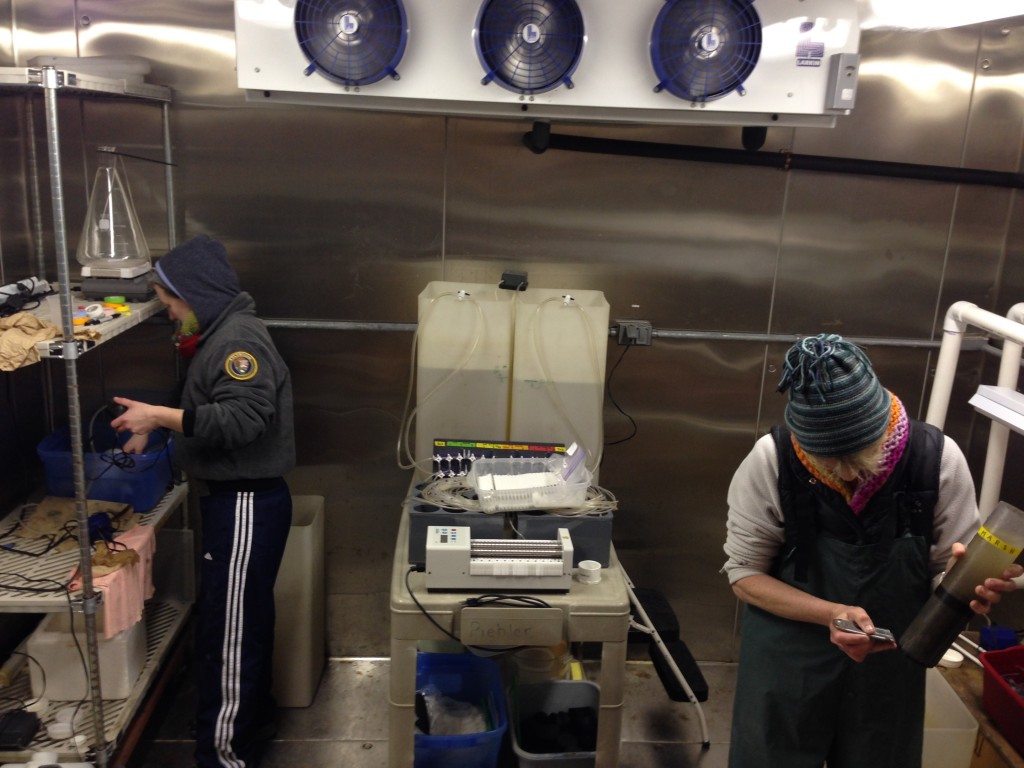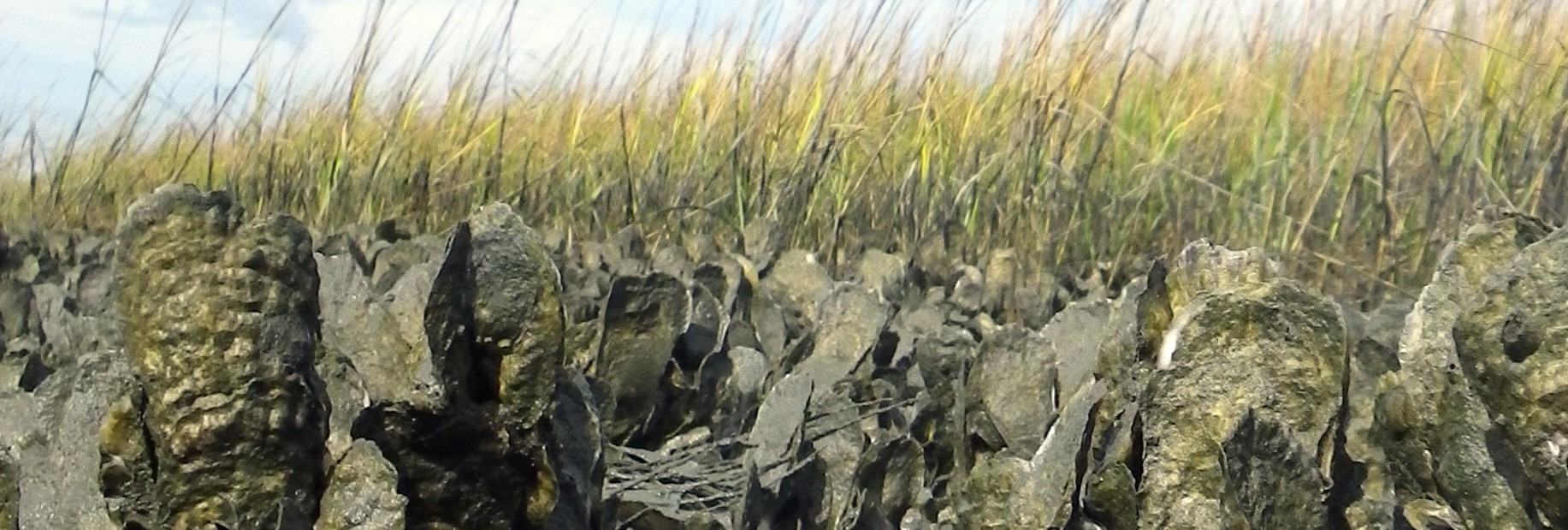Winter field and lab work can be a bit chilly as evidenced by Kathleen and Suzanne’s outfits in the environmental chamber. During winter it is adaptive to think and write about warmer times as Kathleen has done below in this excerpt of a great blog post she wrote for the UNC GRC program (here).
During winter it is adaptive to think and write about warmer times as Kathleen has done below in this excerpt of a great blog post she wrote for the UNC GRC program (here).
Every fall, a group of about twenty undergrads in UNC’s Institute for the Environment (IE) program moves to the Institute of Marine Sciences (IMS) for a field site semester. Although she may be living at the beach, an IE student’s life at IMS is anything but a vacation. Students enroll in three courses, an independent research project, and a capstone seminar, all of which keep them busy in the classroom, lab, and field. During fall 2014, I served as a Graduate Research Consultant for the capstone course, a position that gave me the opportunity to get to know an outstanding group of undergrads.
This year’s capstone seminar was taught by Dr. Michael Piehler, and focused on ecosystem services provided by oyster reefs. The students were tasked with responding to a report issued by the American Association for the Advancement of Science (AAAS) Research Competitiveness Program, commissioned by the UNC General Administration. One of the recommendations in this report was for UNC to “commission studies on the economic valuation of coastal ecosystem services and natural capital.” The IE students worked in small groups to quantify ecosystem services provided by local oyster reefs that were closed and open to shellfishing. They measured physical parameters of the reefs and analyzed water filtration, nitrogen cycling, and habitat provision. One group also measured fecal indicator bacteria in the reefs, which is typically used to guide safe shellfish harvesting. Students planned and executed the lab and field work, giving them ownership over their research that usually isn’t available until graduate school.
By the time the students shared their findings with a packed seminar room at the capstone final presentation, they were knowledgeable and articulate about many aspects of oyster reef ecology. After presenting their research, which indicated that the oyster reefs studied were valued between $22 and $32 per square meter, the students deftly answered challenging questions from the audience. They also compiled a written report that will help local coastal managers prioritize oyster reef restoration initiatives. As a grad student, research is my full-time job, and helping the IE students become researchers too gave my own work renewed clarity and meaning. Like anything else, scientific research includes ups and downs, but the IE semester helped both the undergrads and me understand research in ways that far exceeded expectations.
